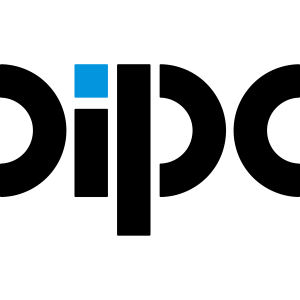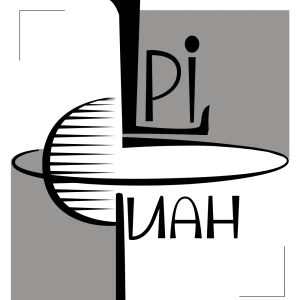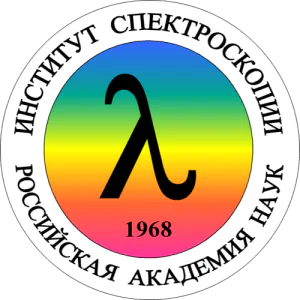Photoinduced Dynamics in Semiconductor Quantum Dots: Insights from Time-Domain ab Initio Studies
Publication type: Journal Article
Publication date: 2009-11-04
scimago Q1
wos Q1
SJR: 5.433
CiteScore: 30.7
Impact factor: 17.7
ISSN: 00014842, 15204898
PubMed ID:
19888715
General Chemistry
General Medicine
Abstract
Nanoscale clusters of bulk materials, also known as quantum dots (QDs), exhibit both molecular and bulk properties. Unlike either bulk or molecular materials, QD properties can be modified continuously by changing QD shape and size. However, the chemical and physical properties of molecular and bulk materials often contradict each other, which can lead to differing viewpoints about the behavior of QDs. For example, the molecular view suggests strong electron-hole and charge-phonon interactions, as well as slow energy relaxation due to mismatch between electronic energy gaps and phonon frequencies. In contrast, the bulk view advocates that the kinetic energy of quantum confinement is greater than electron-hole interactions, that charge-phonon coupling is weak, and that the relaxation through quasi-continuous bands is rapid. By synthesizing the bulk and molecular viewpoints, this Account clarifies the controversies and provides a unified atomistic picture of the nature and dynamics of photoexcited states in semiconductor QDs. Based on the state-of-the-art ab initio approaches in both the energy and time domains, the Account presents a comprehensive discussion of the dynamical processes in QDs, ranging from the initial photon absorption to the final emission. The atomistic description of QDs complements phenomenological models, provides important details, and creates new scientific paradigms. The ab initio approaches are particularly useful for studying geometric and electronic structure of QDs because they treat bulk, surface, ligands, and defects on equal footing and incorporate electronic correlation effects. Nonadiabatic molecular dynamics simulations most closely mimic the complex coupled evolutions of charges, phonons, and spins as they occur in nature. The simulations show that the underlying atomic structure, thermal fluctuations, and surface effects lift electronic state degeneracies predicted by phenomenological models and that excitonic electron-hole interactions are strong in small QDs. Stoichiometric surfaces self-heal. However, only molecular ligands and core/shell designs can eliminate traps associated with dangling chemical bonds, missing atoms, and other defects. Ligands create charge traps and provide high-frequency phonons. The phonon-induced dephasing of electronic excitations is ultrafast, ranging from tens to hundreds of femtoseconds. The dependence of the relaxation on the excitation energy and the density of states clarify the controversies regarding the phonon bottleneck in the photoexcited electron relaxation, and the participation of low-frequency phonons explains the temperature dependence of the relaxation rate. We rationalize the ultrafast generation of multiple excitons without the phononbottleneck by strong Coulomb interactions between the charge carriers. The QD charging and defects explain the large variation in the experimental data on multiple exciton generation. The issues raised here with the electronic states and semiconductor QDs are similar to those found with the spin states and metallic QDs. Assemblies of QDs with other materials, such as organic chromophores and inorganic semiconductors, will present new sets of questions. Time-domain ab initio approaches will allow scientists to address these challenges directly in the near future.
Found
Nothing found, try to update filter.
Found
Nothing found, try to update filter.
Top-30
Journals
|
2
4
6
8
10
12
14
16
|
|
|
Journal of Physical Chemistry C
16 publications, 12.03%
|
|
|
Journal of Chemical Physics
13 publications, 9.77%
|
|
|
Physical Chemistry Chemical Physics
9 publications, 6.77%
|
|
|
ACS Nano
8 publications, 6.02%
|
|
|
Nano Letters
7 publications, 5.26%
|
|
|
Journal of Chemical Theory and Computation
7 publications, 5.26%
|
|
|
Journal of Physical Chemistry Letters
6 publications, 4.51%
|
|
|
Physical Review B
3 publications, 2.26%
|
|
|
Accounts of Chemical Research
3 publications, 2.26%
|
|
|
Journal of the American Chemical Society
3 publications, 2.26%
|
|
|
Proceedings of the National Academy of Sciences of the United States of America
3 publications, 2.26%
|
|
|
Journal of Physics Condensed Matter
2 publications, 1.5%
|
|
|
Chemical Physics
2 publications, 1.5%
|
|
|
Chemical Physics Letters
2 publications, 1.5%
|
|
|
Coordination Chemistry Reviews
2 publications, 1.5%
|
|
|
Chemistry of Materials
2 publications, 1.5%
|
|
|
Chemical Reviews
2 publications, 1.5%
|
|
|
ACS applied materials & interfaces
2 publications, 1.5%
|
|
|
Nanoscale
2 publications, 1.5%
|
|
|
Annual Review of Physical Chemistry
2 publications, 1.5%
|
|
|
Journal of Applied Physics
1 publication, 0.75%
|
|
|
Applied Physics Letters
1 publication, 0.75%
|
|
|
Physical Review Letters
1 publication, 0.75%
|
|
|
Applied Sciences (Switzerland)
1 publication, 0.75%
|
|
|
Journal of Nanoparticle Research
1 publication, 0.75%
|
|
|
Trends in Chemistry
1 publication, 0.75%
|
|
|
Electronic Structure
1 publication, 0.75%
|
|
|
Journal of Luminescence
1 publication, 0.75%
|
|
|
Solar Energy
1 publication, 0.75%
|
|
|
2
4
6
8
10
12
14
16
|
Publishers
|
10
20
30
40
50
60
|
|
|
American Chemical Society (ACS)
59 publications, 44.36%
|
|
|
AIP Publishing
15 publications, 11.28%
|
|
|
Elsevier
14 publications, 10.53%
|
|
|
Royal Society of Chemistry (RSC)
13 publications, 9.77%
|
|
|
Wiley
9 publications, 6.77%
|
|
|
American Physical Society (APS)
4 publications, 3.01%
|
|
|
Springer Nature
3 publications, 2.26%
|
|
|
IOP Publishing
3 publications, 2.26%
|
|
|
Proceedings of the National Academy of Sciences (PNAS)
3 publications, 2.26%
|
|
|
MDPI
2 publications, 1.5%
|
|
|
Annual Reviews
2 publications, 1.5%
|
|
|
Cambridge University Press
1 publication, 0.75%
|
|
|
Society of Polymer Science, Japan
1 publication, 0.75%
|
|
|
Autonomous Non-profit Organization Editorial Board of the journal Uspekhi Khimii
1 publication, 0.75%
|
|
|
10
20
30
40
50
60
|
- We do not take into account publications without a DOI.
- Statistics recalculated weekly.
Are you a researcher?
Create a profile to get free access to personal recommendations for colleagues and new articles.
Metrics
133
Total citations:
133
Citations from 2024:
19
(14.28%)
Cite this
GOST |
RIS |
BibTex |
MLA
Cite this
GOST
Copy
Prezhdo O. Photoinduced Dynamics in Semiconductor Quantum Dots: Insights from Time-Domain ab Initio Studies // Accounts of Chemical Research. 2009. Vol. 42. No. 12. pp. 2005-2016.
GOST all authors (up to 50)
Copy
Prezhdo O. Photoinduced Dynamics in Semiconductor Quantum Dots: Insights from Time-Domain ab Initio Studies // Accounts of Chemical Research. 2009. Vol. 42. No. 12. pp. 2005-2016.
Cite this
RIS
Copy
TY - JOUR
DO - 10.1021/ar900157s
UR - https://doi.org/10.1021/ar900157s
TI - Photoinduced Dynamics in Semiconductor Quantum Dots: Insights from Time-Domain ab Initio Studies
T2 - Accounts of Chemical Research
AU - Prezhdo, Oleg
PY - 2009
DA - 2009/11/04
PB - American Chemical Society (ACS)
SP - 2005-2016
IS - 12
VL - 42
PMID - 19888715
SN - 0001-4842
SN - 1520-4898
ER -
Cite this
BibTex (up to 50 authors)
Copy
@article{2009_Prezhdo,
author = {Oleg Prezhdo},
title = {Photoinduced Dynamics in Semiconductor Quantum Dots: Insights from Time-Domain ab Initio Studies},
journal = {Accounts of Chemical Research},
year = {2009},
volume = {42},
publisher = {American Chemical Society (ACS)},
month = {nov},
url = {https://doi.org/10.1021/ar900157s},
number = {12},
pages = {2005--2016},
doi = {10.1021/ar900157s}
}
Cite this
MLA
Copy
Prezhdo, Oleg. “Photoinduced Dynamics in Semiconductor Quantum Dots: Insights from Time-Domain ab Initio Studies.” Accounts of Chemical Research, vol. 42, no. 12, Nov. 2009, pp. 2005-2016. https://doi.org/10.1021/ar900157s.





















